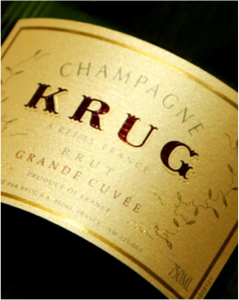Christmas and New Year’s Eve are the biggest holidays for wine sales in the U.S., accounting for 69% more dollar sales than the average two-week period in 2016, ringing up more than $1 billion in sales in the two-week period alone.
U.S. WINE SALES BETWEEN CHRISTMAS AND NEW YEAR’S EVE GENERATE MORE THAN $1 BILLION IN SALES
When looking at specific wine categories, sparkling wine sees an explosion of sales between Christmas and New Year’s, with sales surging 272% during the two-week period. But it’s not just bubbly wine that benefits from consumer preferences: table wine sales jumped 47% during the two weeks between Christmas and New Year’s Eve last year, with red table wine outpacing white table wine.
While wine of all varieties may be the drink of choice for many, spirits also benefit from the holiday season, as sales reach nearly $964 million in a mere two weeks. Christmas and New Year’s Eve are also the most popular holidays for spirits, which experienced a 79% spike in dollar sales in 2016 compared with the average two-week period. But not all spirits sell equally: brown spirits in particular (e.g., cognac and whiskey) see a dramatic sales lift during the holiday season. Cognac sales rise 104% from Christmas to New Year’s and increase 36% leading up to and including the Thanksgiving holiday than the average two-week period. Whiskey sales get stronger, too, with a 27% increase during Thanksgiving and a 98% increase in sales between Christmas and New Year’s compared with an average two weeks in 2016.
While Christmas, New Year’s Eve and Thanksgiving top the list of most important holidays for wine and spirits, beer, flavored malt beverages (FMBs) and cider sales see greater upticks during holidays in the warmer months. In fact, when it comes to Christmas and New Year’s Eve, beer/FMB/ciders rank only fourth on the list of top-selling holidays, with sales lifts of just 8% over the average two-week period. That slight increase, however, still amounts to more than $1.5 billion in sales, which is more than total wine or spirit sales. Despite beer not being a Christmas favorite, cider beverages see a substantial spike during the holidays with 19% more dollars being sold than the average two weeks in 2016 during Christmas and New Years. Also bucking the trend is craft beers with their diversified flavors and styles trumping other beer segments with seasonal sales around the holidays.
When it comes to U.S. holidays, food and adult libations will always be important. But different libations line up with different holidays. That’s why it’s critical that retailers keep the right assortment of products on the shelf for customers year-round to ensure they can choose the best product for the right occasion.
Liz Palmer
www.liz-palmer.com
Source: Nielsen




